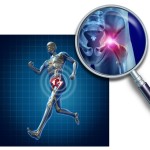4 steps to simplify your ICD-10 coding
ICD-10 implementation has been in effect for over three months now, but this does not necessarily mean that using the new coding set has become second nature for all practices and care settings yet. As the transition from ICD-9 to ICD-10 was a major one, becoming comfortable with the coding system and smoothing over any bumps in the road are going to take some time. If you and your staff are experiencing difficulties making the switch, consider taking advantage of a few tools and strategies that can simplify the process and make the ICD-10 codes less of a burden.
Use these four steps to make your ICD-10 coding easier.
1. Equip your practice with the right system
If you had an outdated electronic health record system leading up to the Oct. 1 implementation date, chances are you had to invest in a new product. However, if you had and are currently relying on a system that can accept ICD-10 codes but does not offer any tools specifically designed to guide you as you make the transition, you may be missing out on useful resources. There are EHRs that come equipped with features that simplify the coding process.
For example, Exscribe's orthopedic EHRs provide users with the Ortho 10 tool, which has filters and subfilters for codes. First, there is an option to select the type of visit and a body map that enables users to choose specific areas of the body that the patient has been treated for to narrow down the coding selection. Once the appropriate code is chosen, a summary panel and the matching ICD-9 code will appear. Investing in EHRs that offer tools like this can significantly improve the time and money it takes to learn the new coding system and reduce errors.
2. Consider hiring more coders
If you have the same number of coders working now as you did when the ICD-9 codes were still in effect and have experienced several obstacles throughout the first couple months of the ICD-10 transition, consider hiring more coders. The American Health Information Management Association pointed out that ensuring there is similar coding productivity levels as there were before the switch may require more coders. The AHIMA recommended looking for skilled coders at community college programs that are accredited by the Commission on Accreditation for Health Informatics and Information Management Education or at contract coding companies.
3. Implement more training if necessary
Your practice has probably already undergone training during the months leading up to the Oct. 1 deadline. However, if you have hired new employees since then or your practice is having an exceptionally difficult time adapting to the coding changes, extra training may be necessary. This is where you and your staff may want to point out any reoccurring problems and find ways to resolve them. The extra time and planning will be worth it, saving you both time and money in the long run, if these issues have been causing setbacks. Similarly, if the workload has become unmanageable, consider seeking outside help, such as a revenue cycle management vendor, which specializes in coding medical bills.
4. Create cheat sheets of prevalent conditions
Depending on your practice and specialty, there may be a handful of conditions and treatments that are most prevalent among patients. For orthopedic surgeons, for example, having a list of codes visible for osteoarthritis cases can make it a lot easier for staff to memorize and correctly enter the appropriate codes into the system. For a list of common diseases for your specialty, look to the Road to 10 resource provided by the Centers for Medicare and Medicaid Services.



